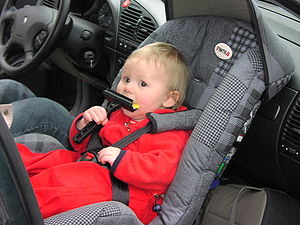Up To Date Information On The Use & Fitting Of Baby Seats
Thursday, 1. June 2017
It’s been a while since I mentioned baby and child seats. As designs and rules have moved on since I last talked about them I thought it would be a good idea to bring things up to date. High street store suppliers now make sure that they send staff on IOSH courses to qualify them to discuss requirements with customers. Mothercare sends out mystery shoppers to assess the quality of advice given by staff.
Seat manufacturer Britax provide training for retailers to enable them to fit car seats properly. The most frequent problem is that parents move the child up to a larger seat too soon. This was a major finding by What Car in which 36% of children were found to be too small for the seat whilst a very small number were still in seats that were too small for them. What Car has listed 10 checks that you should carry out to protect your youngster as follows:
Is your child too small or large for the seat? If in doubt seek advice of an expert.
If the seat is secured by the car’s seatbelt make sure that it isn’t twisted and that it is fitted tightly enough around the child seat. It should be tight enough not to move if you push it.
When moving from wearing thick winter clothes to thinner summer clothes make sure you adjust the harness so that it isn’t too loose. Pinch the harness in front of the child’s collarbone and if you can pinch a lot of fabric between your fingers the belt is too loose.
If you’ve adjusted the seat’s headrest because your child has grown ensure the harness has been correctly routed back into place.
If using a travel system seat with a carry handle, don’t forget to put it back to the correct position after putting your child in the seat.
If using an Isofix seat, check that it is correctly clipped in. Indicators will change from red to green on the seat when fitted correctly.
If using a seat with a leg support check that the leg is fitted firmly to the car’s floor, that it’s at a 90 degree angle to the floor and that it’s not resting on an underfloor storage department unless this has been filled with a car manufacturer approved filler.
If using a seat with a top tether, ensure that it is routed over the back of the seat and clipped into the correct mounting point, not a luggage hook.
Don’t secure a high back booster with the car’s head rest: this needs to be moved out of the way so the child seat sits flush with the car seatback.
If you’re using a seat that is suitable for a wide age range, check it regularly for wear and tear; don’t just assume that it will stay safe for many years.
One final piece of research showed that babies should be kept as flat as possible as long as possible so avoid long journeys during which the baby is angled at 45 degrees. If it is necessary make frequent stops and lay them flat as often as possible.
By Graham Hill

